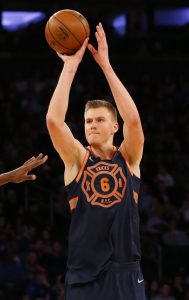Under the NBA’s previous Collective Bargaining Agreement, the values of various exceptions like the mid-level and bi-annual were established years in advance, but the league’s current CBA tweaked how those exceptions are calculated.
Rather than being determined ahead of time, the mid-level and bi-annual exceptions – along with several other cap-related figures and exceptions – are dependent on the movement of the salary cap from year to year. If the cap increases by 5% from one league year to the next, the exceptions increase by the same rate.
As such, we don’t know yet exactly what those exceptions will be worth in 2019/20, but we can make an educated estimate. The NBA’s most recent cap projections called for a $109MM cap for next season. That would be approximately a 7% increase on this year’s $101.869MM cap. If that projection holds, the values of the mid-level and bi-annual exceptions would increase by 7% too.
[RELATED: Early Maximum Salary Projections For 2019/20]
Based on a $109MM cap, here’s what the mid-level and bi-annual exceptions would look like in 2019/20:
Mid-Level Exception
| Year | Standard MLE |
Taxpayer MLE | Room MLE |
|---|---|---|---|
| 2019/20 | $9,246,000 | $5,711,000 | $4,760,000 |
| 2020/21 | $9,708,300 | $5,996,550 | $4,998,000 |
| 2021/22 | $10,170,600 | $6,282,100 | – |
| 2022/23 | $10,632,900 | – | – |
| Total | $39,757,800 | $17,989,650 | $9,758,000 |
The standard mid-level exception is available to over-the-cap teams that haven’t dipped below the cap to use room and don’t go over the tax apron at all. It can run for up to four years, with 5% annual raises.
The taxpayer mid-level exception is for in-the-tax teams, or teams that want the flexibility to surpass the tax apron later. It can run for up to three years, with 5% annual raises.
The room exception is for teams that go under the cap and use their space. Once they’ve used all their cap room, they can use this version of the mid-level exception, which runs for up to two years with 5% annual raises.
Bi-Annual Exception
| Year | BAE Value |
|---|---|
| 2019/20 | $3,619,000 |
| 2020/21 | $3,799,950 |
| Total | $7,418,950 |
The bi-annual exception is only available to teams that over the cap and under the tax apron. It can also only be used once every two years, which will disqualify the Bucks, Pelicans, Knicks, and Spurs from using it in 2019/20 — they all used their BAE in 2018/19.

 A top-14 pick who does not meet the starter criteria will receive a qualifying offer equal to the amount the 15th overall pick would receive if he signed for 120% of the rookie scale.
A top-14 pick who does not meet the starter criteria will receive a qualifying offer equal to the amount the 15th overall pick would receive if he signed for 120% of the rookie scale.